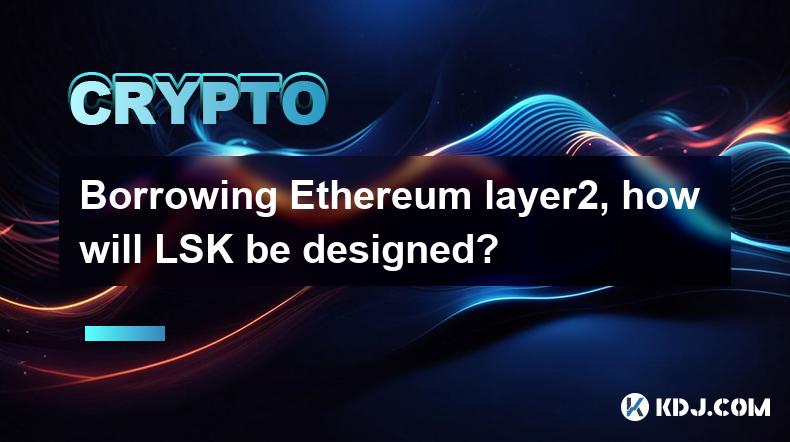-
 Bitcoin
Bitcoin $84,951.6979
0.08% -
 Ethereum
Ethereum $1,592.4705
-1.50% -
 Tether USDt
Tether USDt $1.0001
0.03% -
 XRP
XRP $2.1031
-1.54% -
 BNB
BNB $583.7595
-0.25% -
 Solana
Solana $128.6618
-1.17% -
 USDC
USDC $0.9999
-0.02% -
 TRON
TRON $0.2548
3.02% -
 Dogecoin
Dogecoin $0.1557
0.07% -
 Cardano
Cardano $0.6133
-1.84% -
 UNUS SED LEO
UNUS SED LEO $9.4090
0.64% -
 Chainlink
Chainlink $12.3914
0.19% -
 Avalanche
Avalanche $19.0828
-2.75% -
 Stellar
Stellar $0.2375
-0.92% -
 Toncoin
Toncoin $2.8958
-2.15% -
 Shiba Inu
Shiba Inu $0.0...01190
0.34% -
 Sui
Sui $2.1128
-2.19% -
 Hedera
Hedera $0.1593
-2.45% -
 Bitcoin Cash
Bitcoin Cash $322.2482
-0.50% -
 Litecoin
Litecoin $75.2246
-1.23% -
 Polkadot
Polkadot $3.5825
-0.77% -
 Dai
Dai $1.0000
0.00% -
 Hyperliquid
Hyperliquid $15.8837
0.99% -
 Bitget Token
Bitget Token $4.3571
1.11% -
 Ethena USDe
Ethena USDe $0.9991
0.00% -
 Pi
Pi $0.6165
-7.44% -
 Monero
Monero $219.5960
1.96% -
 Uniswap
Uniswap $5.1991
-1.57% -
 OKB
OKB $51.7559
0.12% -
 Pepe
Pepe $0.0...07193
-0.33%
Borrowing Ethereum layer2, how will LSK be designed?
LSK intends to enhance the LSK blockchain's scalability through its planned Layer2 solution, prioritizing high transaction throughput, budget-friendly fees, security, and user-friendliness.
Feb 09, 2025 at 05:06 am

Key Points
- Overview of Ethereum Layer2
- LSK's Design Goals
- Existing LSK Layer2 Projects
Overview of Ethereum Layer2
Ethereum Layer2 refers to a set of technologies that are built on top of the Ethereum blockchain to improve its scalability and performance. Layer2 solutions typically operate in parallel with the main Ethereum chain and process transactions off-chain, reducing the load on the main network. This allows Layer2 solutions to achieve higher transaction throughput and lower fees compared to the main Ethereum chain.
There are various types of Layer2 solutions, each with its own advantages and disadvantages. Some of the most commonly used Layer2 solutions include:
- Plasma: Plasma is a framework for building scalable blockchain applications. Plasma chains are independent blockchains that are linked to the main Ethereum chain. Transactions on Plasma chains are processed off-chain and then submitted to the main chain for finalization.
- Optimistic Rollups: Optimistic Rollups bundle multiple transactions together into a single transaction that is submitted to the main Ethereum chain. Optimistic Rollups assume that all transactions are valid and only challenge invalid transactions after they have been submitted to the main chain.
- ZK Rollups: ZK Rollups bundle multiple transactions together into a single transaction that is submitted to the main Ethereum chain. ZK Rollups use cryptographic proofs to verify the validity of transactions, which makes them more efficient than Optimistic Rollups.
LSK's Design Goals
LSK is a blockchain platform that is designed to be scalable, secure, and easy to use. LSK is developing its own Layer2 solution to improve the scalability of the LSK blockchain.
LSK's Layer2 solution will have the following goals:
- High transaction throughput: LSK's Layer2 solution will be able to process a high volume of transactions per second.
- Low transaction fees: LSK's Layer2 solution will have low transaction fees compared to the main Ethereum chain.
- Security: LSK's Layer2 solution will be secure and resistant to fraud.
- Ease of use: LSK's Layer2 solution will be easy to use for developers and users.
Existing LSK Layer2 Projects
LSK is currently developing two Layer2 projects:
- LSK DeFI Hub: The LSK DeFI Hub is a decentralized finance platform that is built on the LSK blockchain. The LSK DeFI Hub allows users to trade digital assets, borrow and lend cryptocurrencies, and participate in other DeFi activities.
- LSK L2 Network: The LSK L2 Network is a Layer2 network that is being developed by Lisk Research. The LSK L2 Network will be used to process transactions off-chain and improve the scalability of the LSK blockchain.
FAQs
What are the benefits of using LSK's Layer2 solution?
LSK's Layer2 solution offers a number of benefits, including:
- Higher transaction throughput: LSK's Layer2 solution will be able to process a high volume of transactions per second.
- Lower transaction fees: LSK's Layer2 solution will have low transaction fees compared to the main Ethereum chain.
- Security: LSK's Layer2 solution will be secure and resistant to fraud.
- Ease of use: LSK's Layer2 solution will be easy to use for developers and users.
When will LSK's Layer2 solution be released?
LSK's Layer2 solution is currently under development. The LSK team has not yet announced a release date for the Layer2 solution.
What are the potential risks associated with using LSK's Layer2 solution?
There are a number of potential risks associated with using LSK's Layer2 solution, including:
- Security: Layer2 solutions are not as secure as the main Ethereum chain. This is because Layer2 solutions are not subject to the same level of security audits and testing as the main Ethereum chain.
- Scalability: Layer2 solutions can only scale up to a certain point. This is because Layer2 solutions rely on the main Ethereum chain to process transactions. If the main Ethereum chain becomes congested, then Layer2 solutions will also become congested.
- Complexity: Layer2 solutions can be complex to use. This is because Layer2 solutions require developers to understand the underlying technology of the Layer2 solution.
Disclaimer:info@kdj.com
The information provided is not trading advice. kdj.com does not assume any responsibility for any investments made based on the information provided in this article. Cryptocurrencies are highly volatile and it is highly recommended that you invest with caution after thorough research!
If you believe that the content used on this website infringes your copyright, please contact us immediately (info@kdj.com) and we will delete it promptly.
- Just Days After Collapsing More Than 90%, Mantra (OM) Shows Signs of Life – Rebounding 30%
- 2025-04-17 00:35:15
- ZetaChain Expands Its Mainnet to Include Arbitrum, Opening Up Its Features to Over 50 Million New Users
- 2025-04-17 00:35:15
- DWF Labs Expands Operations Into the US Market by Investing $25M in World Liberty Financial (WLFI)
- 2025-04-17 00:30:13
- Bitcoin (BTC) Unrealized Losses Stay Low, Buyer Activity Increased
- 2025-04-17 00:30:13
- The dark side of market-making: How loan option models are being used to rug pull cryptocurrency projects
- 2025-04-17 00:25:15
- FFG Token is scheduled to go live in the coming weeks
- 2025-04-17 00:25:15
Related knowledge

What is Ethereum’s Slashing mechanism and how to punish malicious behavior?
Feb 20,2025 at 03:08am
Key PointsOverview of slashingDifferent types of slashing in EthereumIncentives and consequences of slashingIdentifying and reporting slashed validatorsOngoing discussions and potential improvementsEthereum's Slashing Mechanism: Punishing Malicious BehaviorEthereum's slashing mechanism is an essential tool for ensuring network security and punishing mal...

What is the verifier node of Ethereum and how to become a verifier?
Feb 19,2025 at 06:00pm
The Verifier Node of Ethereum: A Comprehensive GuideKey Points:What is a Verifier Node?How to Become a Verifier NodeResponsibilities and Rewards of a Verifier NodeMinimum Requirements for Becoming a Verifier NodePotential Difficulties in Running a Verifier Node1. What is a Verifier Node?A Verifier Node is an independent entity on the Ethereum network th...

What is Ethereum’s staking, and how to participate and earn money?
Feb 19,2025 at 04:37pm
Key Points:Understanding Ethereum's Staking MechanismSteps to Participate in StakingBenefits and Rewards of StakingSecurity and Risk ConsiderationsTechnical Requirements and Hardware OptionsPotential Challenges and Troubleshooting TipsFAQs on Ethereum StakingWhat is Ethereum's Staking?Proof-of-Stake (PoS) is a consensus mechanism used in blockchain netw...

What is Ethereum’s DAO (Decentralized Autonomous Organization) and how does it work?
Feb 20,2025 at 03:12am
Key PointsDefinition and Structure of a DAOGovernance and Decision-Making in DAOsBenefits and Use Cases of DAOsChallenges and Limitations of DAOsWhat is Ethereum's DAO (Decentralized Autonomous Organization) and How Does It Work?Definition and Structure of a DAOA Decentralized Autonomous Organization (DAO) is an innovative governance and management fram...

What is Ethereum's multi-signature wallet and how to improve security?
Feb 20,2025 at 02:18pm
Key Points:Understanding the Concept of a Multi-Signature WalletBenefits and Drawbacks of Multisig WalletsRequirements for Setting Up a Multisig WalletStep-by-Step Guide to Generating a Multisig WalletImplementing Strategies for Enhanced Security1. Understanding the Concept of a Multi-Signature WalletA multi-signature (multisig) wallet in the Ethereum e...

What is Ethereum's oracle and how to provide data for smart contracts?
Feb 21,2025 at 01:30am
Key Points:Understanding the concept of oracles in EthereumExploring different types of oraclesDetailed guide on how to provide data for smart contractsAddressing potential challenges and considerationsWhat is Ethereum's Oracle?Oracles are crucial components in the Ethereum ecosystem, enabling smart contracts to access real-world data and off-chain even...

What is Ethereum’s Slashing mechanism and how to punish malicious behavior?
Feb 20,2025 at 03:08am
Key PointsOverview of slashingDifferent types of slashing in EthereumIncentives and consequences of slashingIdentifying and reporting slashed validatorsOngoing discussions and potential improvementsEthereum's Slashing Mechanism: Punishing Malicious BehaviorEthereum's slashing mechanism is an essential tool for ensuring network security and punishing mal...

What is the verifier node of Ethereum and how to become a verifier?
Feb 19,2025 at 06:00pm
The Verifier Node of Ethereum: A Comprehensive GuideKey Points:What is a Verifier Node?How to Become a Verifier NodeResponsibilities and Rewards of a Verifier NodeMinimum Requirements for Becoming a Verifier NodePotential Difficulties in Running a Verifier Node1. What is a Verifier Node?A Verifier Node is an independent entity on the Ethereum network th...

What is Ethereum’s staking, and how to participate and earn money?
Feb 19,2025 at 04:37pm
Key Points:Understanding Ethereum's Staking MechanismSteps to Participate in StakingBenefits and Rewards of StakingSecurity and Risk ConsiderationsTechnical Requirements and Hardware OptionsPotential Challenges and Troubleshooting TipsFAQs on Ethereum StakingWhat is Ethereum's Staking?Proof-of-Stake (PoS) is a consensus mechanism used in blockchain netw...

What is Ethereum’s DAO (Decentralized Autonomous Organization) and how does it work?
Feb 20,2025 at 03:12am
Key PointsDefinition and Structure of a DAOGovernance and Decision-Making in DAOsBenefits and Use Cases of DAOsChallenges and Limitations of DAOsWhat is Ethereum's DAO (Decentralized Autonomous Organization) and How Does It Work?Definition and Structure of a DAOA Decentralized Autonomous Organization (DAO) is an innovative governance and management fram...

What is Ethereum's multi-signature wallet and how to improve security?
Feb 20,2025 at 02:18pm
Key Points:Understanding the Concept of a Multi-Signature WalletBenefits and Drawbacks of Multisig WalletsRequirements for Setting Up a Multisig WalletStep-by-Step Guide to Generating a Multisig WalletImplementing Strategies for Enhanced Security1. Understanding the Concept of a Multi-Signature WalletA multi-signature (multisig) wallet in the Ethereum e...

What is Ethereum's oracle and how to provide data for smart contracts?
Feb 21,2025 at 01:30am
Key Points:Understanding the concept of oracles in EthereumExploring different types of oraclesDetailed guide on how to provide data for smart contractsAddressing potential challenges and considerationsWhat is Ethereum's Oracle?Oracles are crucial components in the Ethereum ecosystem, enabling smart contracts to access real-world data and off-chain even...
See all articles























































































